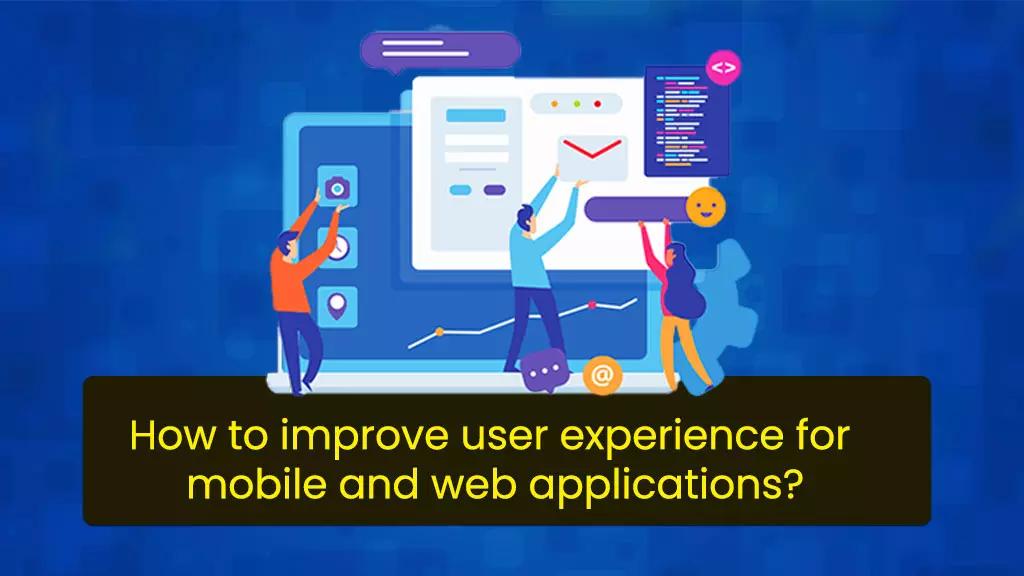User experience is an integral part of a product life cycle that defines the extent to which a product is going to succeed. The features of a product, esthetic design, placement of buttons and all contribute to user experience for mobile and web applications. The initial designs of products are built in accordance with global standards and design conventions which presumes the hypothesis that it is the perfect design for this product. Usually, companies either keep the same design or do hit and trial to enhance the user experience. This article intends to navigate you on the product’s journey of “How to improve the user experience for mobile and web applications.
The journey of a product starts from an innovative idea to solve a problem that the masses need to be solved. Innovative ideas are then translated into products and services which are supported with mobile and web applications.
How to improve the user experience for web apps?
The following listed points will sum up as a step by step guide for you on “ How to improve the user experience for mobile and web applications”.
1. Provide necessary features in an application
When you plan any mobile or web application development then first of all you must analyze what are the necessary features that a user will require in this use case.
-
For a data intensive application, good visualization will be required.
-
For a food delivery application listing of restaurants, menu, payment methods, ordering process, account registration, login and responsive design are necessary features for even a minimalist app.
2. Design the application with standard design conventions, signs and notations.
Your application is going to be a new product for users in the market and for them there is already a learning curve to use this application. If web designers start using custom-designed icons in this mobile or web application then it is only going to steepen the learning curve for users. I don’t need to tell you that if the problem of a solution is difficult to implement then only a few users will use your solution who are in dire need of it.
To curb this learning curve web designers can use standard design conventions that are trending in the market at that point of time. The mobile or web applications can be designed with the most popular libraries such as material UI, bootstrap 4, Ant, Primefaces to easily set up standard signs, symbols and notations.
Read: Frontend Developer RoadMap 2020
3. Optional quick user guide for new users in the application user interface.
Every product or application provides a user manual but hardly any user reads that documentation because of being a cumbersome task. When they straight forward start using the application and find it difficult to use then they defer the idea of using it. Although it is a user's mistake to not read the manual, it’s businesses that have to bear the consequences. Whenever a user logs in to your application for the first time then an optional quick user guide should be prompted to users. The guide should navigate users through all the buttons, features and data via UI elements.
4. Keep conducting surveys on application to gather user feedback
The design and features that have been provided in the product are based on the hypothesis of being a perfectly integrated solution that the user needs. The possibility of this hypothesis being wrong is very high but the real question is what are the features that a user wants. To know what users think about features that we have built and what they want, feedback and surveys are conducted. The continuous loop of feedback, survey and development will help you to enhance the user experience.
Read: Tools and Libraries for Data Visualization in 2020
5. Tracking user behavior to find improvement areas of the user interface.
The users might want tons of features that might not be useful for them and financially it’s not possible to fulfill all of their desires. Hence we have to filter out and prioritize requirements from this pool but this decision should be legitimately made on the basis of data otherwise it will be an inefficient approach of hit and trial. To gather such kinds of data different tools are available in the market like google analytics, crazy egg and hotjar. Google analytics helps in tracking user activity across different pages and user demographics which on a high level informs us about users and sections of our product in which they are interested. Whereas crazyegg and hotjar prepare heatmaps on the average user activity over different sections of a page and anonymized video clips of user interaction with the product. Such heatmaps and small videos provide a micro-level view about which sections of a page are not helpful for users. Now a data-driven process provides you small sections that need to be improved with hit and trial rather than vaguely experimenting with the whole product.
I hope that this article helps you in improving user experience of mobile and web applications with minimalist and well-channelized efforts.
Read: Challenges In Marketing AI & Machine Learning Solutions

